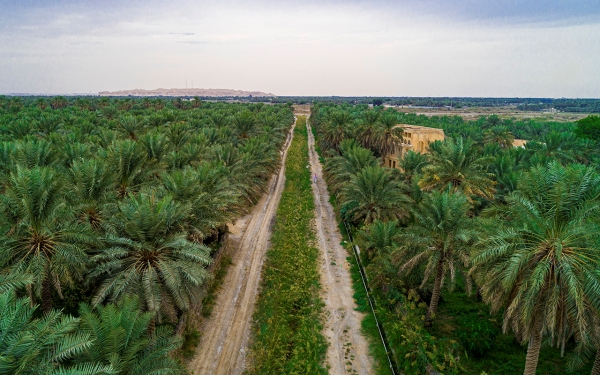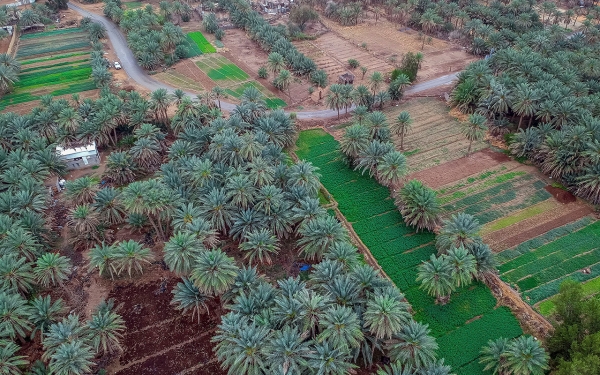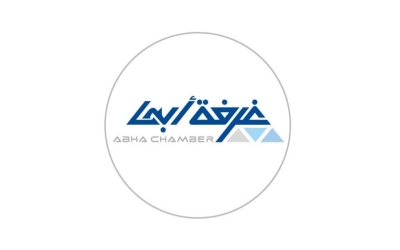

Palm Trees in the Kingdom of Saudi Arabia serve as a national symbol, a food source, and an economic resource in the Kingdom. The palm tree can grow individually or in clusters, with multiple stems originating from a single root system. It typically reaches a height of twenty-five to forty-five m above the ground. Its leaves are compound and pinnate, measuring between 240 and 370 cm in length, often adorned with sharp thorns. The crown of the palm tree spans between six to ten m in height.
The status of palm trees
In the Kingdom, the palm tree is an icon that symbolizes prosperity, progress, and vitality, prominently featured in the official Saudi emblem. Its mention in the Holy Quran underscores its enduring significance across decades in the history, culture, and civilization of the Arabian Peninsula, serving as a staple food and a vital source of human security.
Saudi palm trees in UNESCO and Guinness
Al-Ahsa Oasis spans approximately 85.4 km, boasting over 2.5 million palm trees sustained by a vast groundwater aquifer. Its irrigation is facilitated by over 280 artesian wells, enabling year-round agricultural activity. In 2020, al-Ahsa Oasis achieved recognition in the Guinness Book of World Records as the largest standalone oasis globally. This marked the Kingdom's second global presence following its inclusion in United Nations Educational, Scientific, and Cultural Organization (UNESCO)'s World Heritage List in 2018.
Production and export of dates
In 2020, the Kingdom secured the second position worldwide in date production, accounting for 17 percent of the total global production. Over 1.7 million palm trees in earned the Saudi Dates Mark, constituting 5 percent of the Kingdom's total palm tree count, which surpassed 31 million at the time. Additionally, the number of factories under the Saudi Dates Mark reached forty-two, collectively yielding over 432,720 t of dates.
In 2022, the Kingdom's date production soared to 1.6 million t, surpassing 125 percent self-sufficiency. The Saudi Dates Mark expanded to forty-one affiliated farms, comprising thirty-two intensive agriculture farms and nine organic farms.
Legally, a registered trademark is granted to dates in the Kingdom by the National Center for Palms and Dates, in accordance with the requirements of global markets. In respect of the commercial sector, al-Ahsa Governorate is home to the largest number of factories producing dates, with more than thirty factories.
In 2021, the Kingdom claimed the top spot globally for date exports in terms of value, as per the Trade Mab website of the World Trade Center. Its date exports reached SAR1.215 billion that year, marking a 13 percent annual growth rate, the highest over the past five years. From 2016 to 2021, the value of date exports surged by 110 percent, with Saudi dates making their way into 113 countries.
In 2022, the Kingdom boasted over 34 million palm trees. Export figures for dates and their derivatives surged in the Kingdom, exceeding 321,000 t valued at SAR1.28 billion. This marked a 5.4 percent increase from 2021, with exports spanning 116 countries worldwide.
The value of the palm and date sector in Saudi Arabia
The palm and date sector in the Kingdom boasts a value of SAR7.5 billion, constituting 12 percent of the overall agricultural output and 0.4 percent of the total non-oil output. With a count of 34 million palm trees, the Kingdom claims 27 percent of the world's palm tree population. Furthermore, there are 123,000 agricultural holdings dedicated to palm trees in the Kingdom.
Converting palm fronds into high-quality wood
The Saudi Investment Recycling Company (SRIC), a subsidiary of the Public Investment Fund, is collaborating with King Faisal University in al-Ahsa on developing an initiative to transform palm leaves, a plentiful natural resource abundant in the Kingdom, into premium-quality wooden boards.
This technology for converting palm leaves into high-quality wood holds great promise and contributes to environmental conservation. The wood resulting from palm fronds possesses numerous benefits, including durability, high resistance to corrosion, and resilience against various weather conditions. Moreover, it is less expensive than natural wood due to its abundant availability and easy processing. Importantly, its production is eco-friendly and does not involve the felling of trees. The wood derived from palm leaves finds wide-ranging applications, such as crafting furniture for homes and offices, manufacturing household appliances, and producing construction materials.
Related quizzes
Related articles


